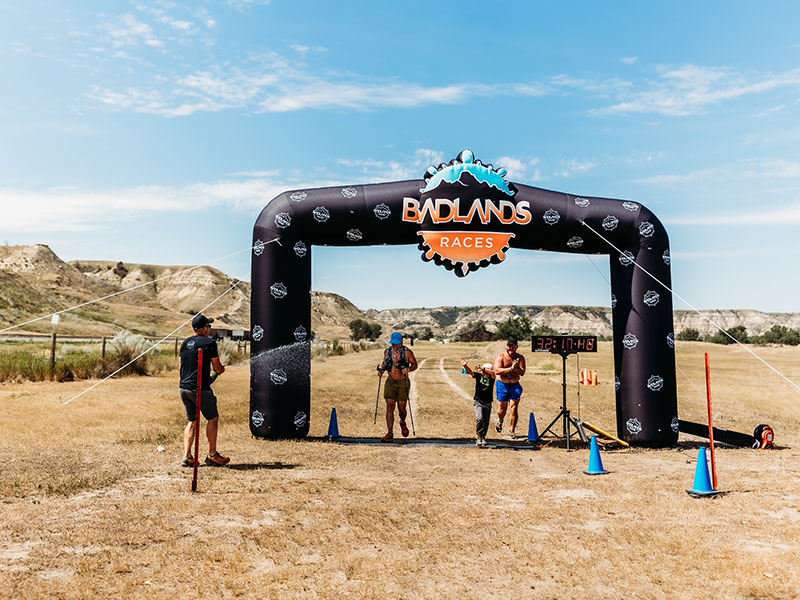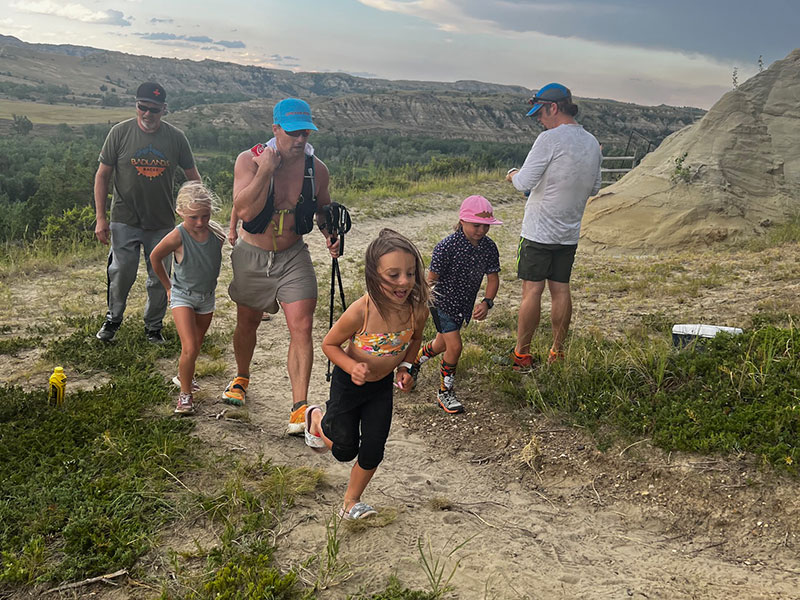- Products
- About
- Responsibility
- Environment
- News
- Contact us
- Careers
-

“There are so many things possible in this world, and you can do anything if you put the work in,” says Sean Senske, Electrical & Instrumentation maintenance field technician at Dakota Gas.
Senske has always loved the outdoors and enjoys hunting and fishing and other adventure activities. He’s done a number of solo backpack hunts and being outdoors is second nature to him. When Senske became interested in ultramarathoning, a footrace longer than a traditional marathon of 26 miles, he found he had a strong desire to complete one of his own. “I found out about ultras a few years ago and always thought it would be really cool to accomplish one; it was really interesting and intriguing to me,” Senske says. “I wanted to prove to myself I could do it and I wanted to show my kids that anything is possible.”
Senske’s next step was to decide where and when he’d complete an ultramarathon. “I knew about the Maah Daah Hey trail and the mountain biking that went on, but I didn’t know there was a trail run on it. I started searching ultramarathons in North Dakota and found out about the actual race series on the trail last year,” Senske says.
Located in western North Dakota, the Maah Daah Hey trail is a 144-mile trail system that weaves its way through some of the state’s most beautiful landscapes. The terrain ranges from grassy flats and ridges to steep buttes, river bottoms, and wooded draws.
This past July, the organization put on a 108.1-mile race starting at the CCC Campground located 15 miles south of Watford City, North Dakota, and ending in Medora, North Dakota. The race started at 6 a.m. on July 29 and participants ran, jogged, and/or walked until they were finished.
Senske signed up and marked the time off on his calendar. When people found out what he was doing, they were excited to help. His wife, Mandy, took their F250 with a pickup box camper and met him every 10 miles or so with water and food. She also brought extra gear, clothing, socks, shoes, and first aid items. Friends Noah DuBord and Ashley Baker volunteered as pacers. They met Senske at mile 48 and took turns running alongside him on the trail, providing encouragement and the extra push he needed to keep going. His mom, Kim, and kids, twins Hollis and River (9), and Baker (6), drove out each day to watch him along the route.

Although Senske didn’t do anything special to prepare for the race, his years of working out five days a week helped him feel confident that he could complete it. “I followed my normal workout program,” Senske says. “Two weeks before the race, I did low-impact training like biking, rowing, and swimming, along with a small amount of incline interval running. The week of the race, I did mobility and stretching and 10-20 minutes of intense interval training each day.”
Senske and his wife ran into Jared Borlaug, shift supervisor at Antelope Valley Station, over the 4th of July weekend and started talking about the race. “I don’t think either one of us knew the other one was running the race until that point” Senske says. Borlaug, who began running in 2016, had a friend who was just getting into ultramarathons at that time. “A year after I started running, I paced/crewed him on his Maah Daah Hey 100-mile run, and after that I was hooked,” Borlaug says. “The trail is one of my favorite places to run, so when the timing of the race lined up with my schedule, I knew I would run it,” he says.
Because Borlaug had already run the trail, Senske asked him for some insight and tips on what to expect for the race. “I didn’t have any experience with how my body might feel or how hydration and fueling would go,” Senske says. “The longest I had ever run was nine miles to and from work.” Borlaug advised Senske on salt intake, support vehicles, race route, and nutrition. “Sean and I talked about the course and what to expect,” Borlaug says. “Our wives are good friends, so they communicated quite a bit on various things too.”
The first 48 miles of the race went well and then a thunderstorm hit. “The trail turned to gumbo,” Senske says. “I was sliding down hills and my shoes felt like they each weighed 10 pounds. It took a lot of extra energy to get through it, so I ended up walking for about 20 miles.” There was a creek crossing in the last quarter of the race, which was normally dry, but after the storm there was a flash flood, and the water was waist high in some places. “The mud was the biggest challenge of the race,” Senske says.
The last 16 miles of the race were tough on Senske. “I liked proving that I could finish without any special training, but I wouldn’t recommend it to anyone,” he says. “My legs and feet were shot and ready to shut down, and I had a really hard time walking over the next few days, and I didn’t feel well for the first week afterwards.”
Mentally, Senske says he loved it. “You’re surrounded by extremely nice, happy, and positive people; however, physically, I could have used some big mile training days a few months in advance to better prepare my body for the race.”
Although the race was difficult and pushed Senske to his limits, he’s happy that he accomplished what he set out to do. In the end he says, “How hard can something be if you’re really excited to try it?”
Senske finished the race in 32 hours and placed seventh overall, and second place in the over-40 age group.
Borlaug finished the race in 25 hours and placed second overall.
Dakota Gasification Company
Headquarters:
1717 East Interstate Avenue | Bismarck, ND 58503-0564 USA
701.223.0441 | 1.800.242.2372
Great Plains Synfuels Plant
420 County Road 26
Beulah, ND 58523-9400 USA
701-873-2100
A subsidiary of:
Basin Electric wants all interested and qualified candidates to apply for employment opportunities. If you are an applicant with a disability who is unable to use our online tools to search and apply for jobs, or who needs other assistance or accommodations, please contact us at 701-223-0441. Please indicate the specifics of the assistance needed or provide your contact information, and a Basin Electric Human Resources representative will contact you. Basin Electric is an Equal Employment Opportunity Employer regarding race, color, religion, sex, sexual orientation, gender identity, national origin, disability, and veterans status.